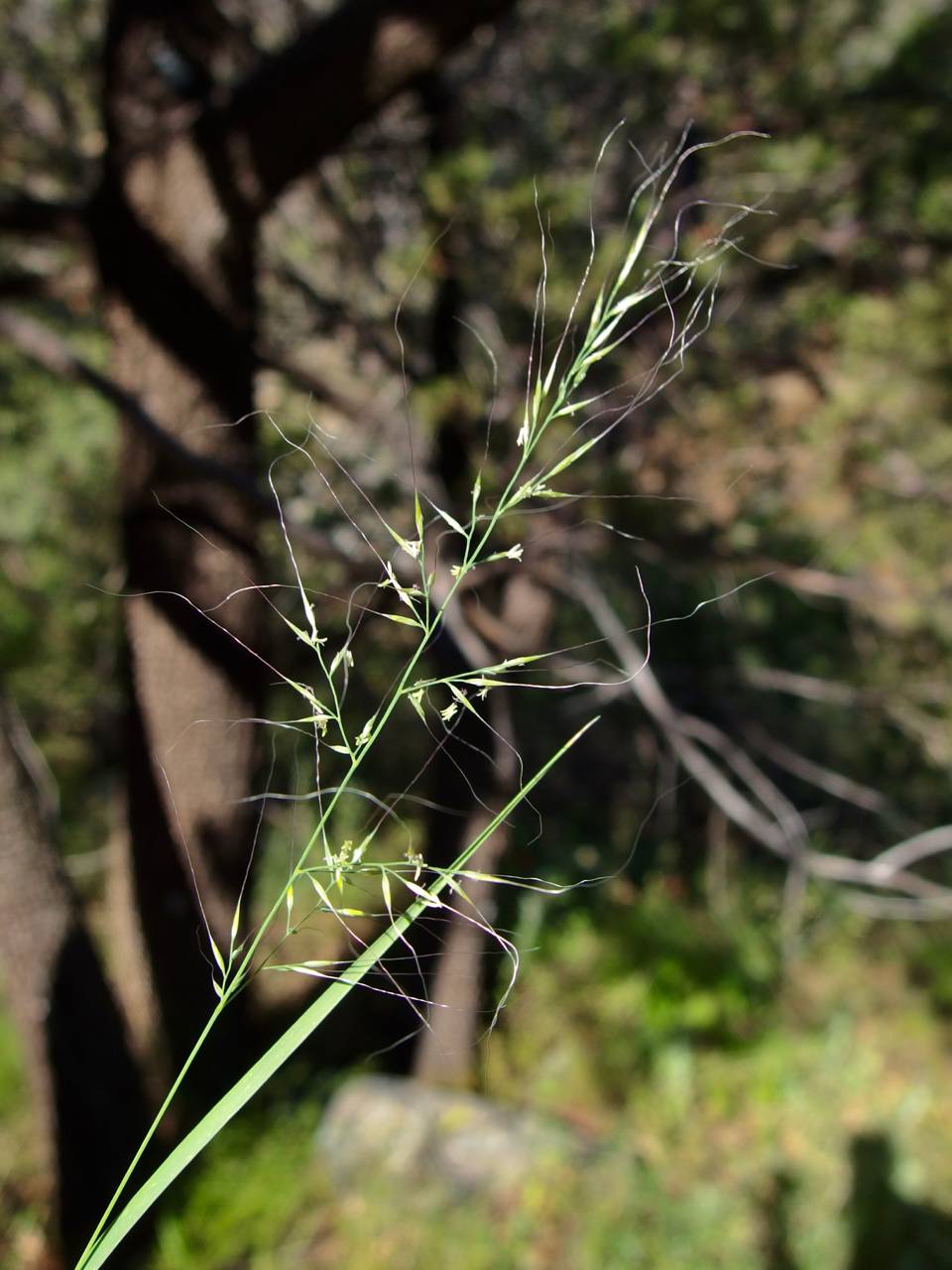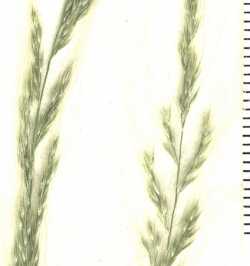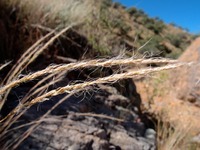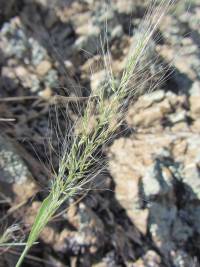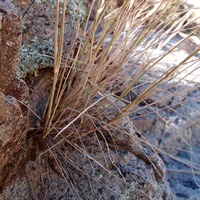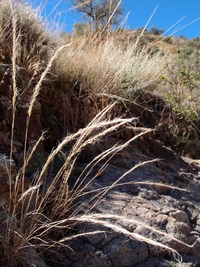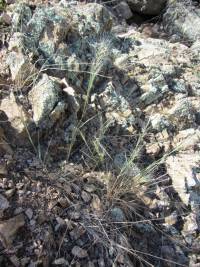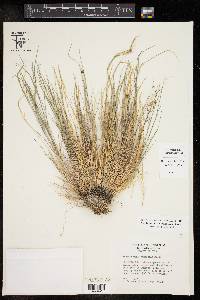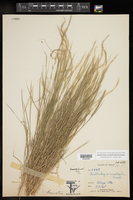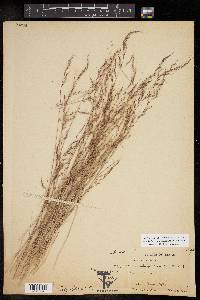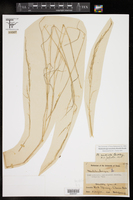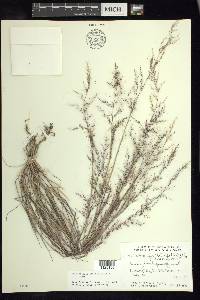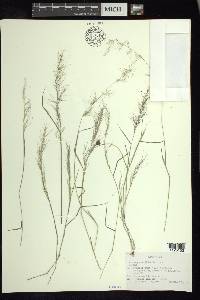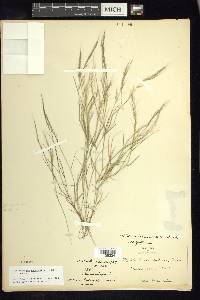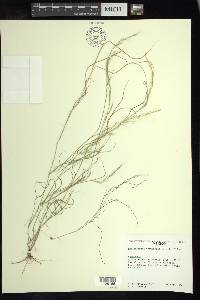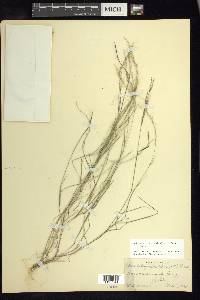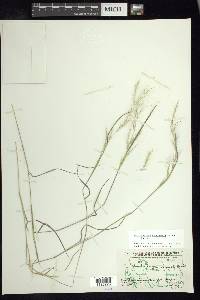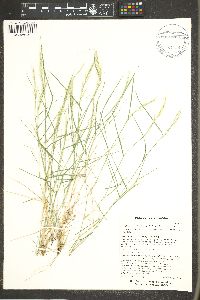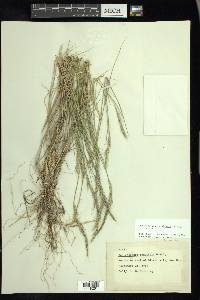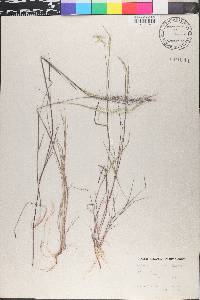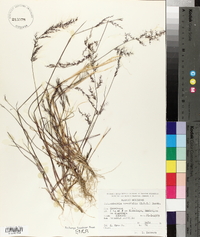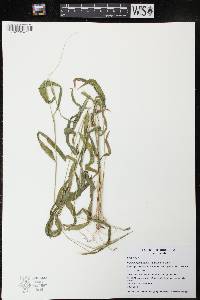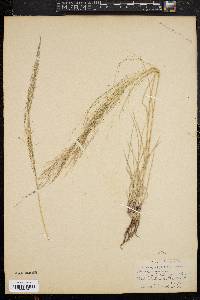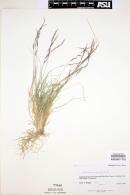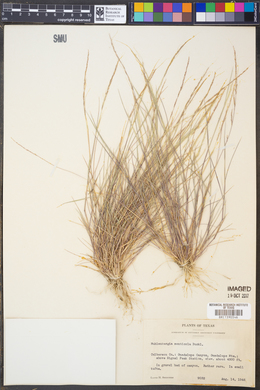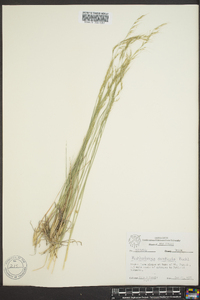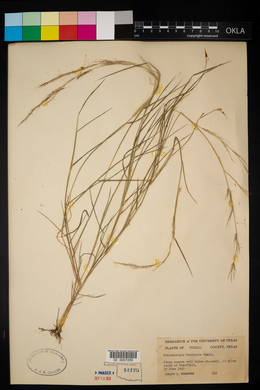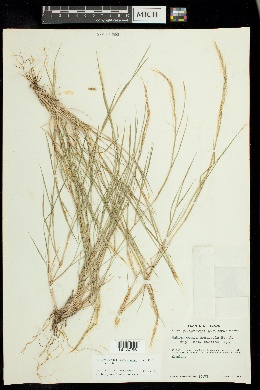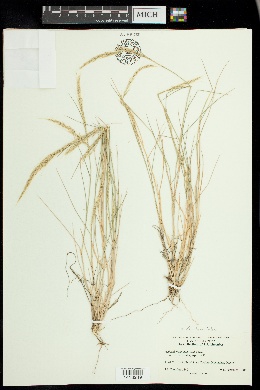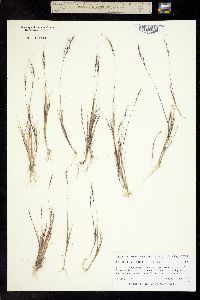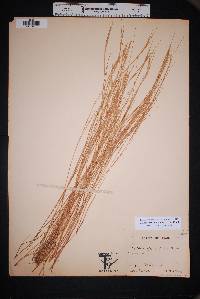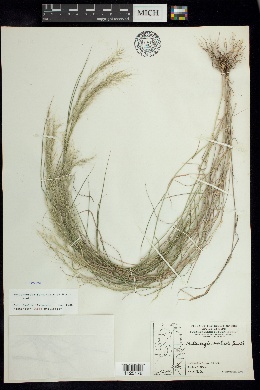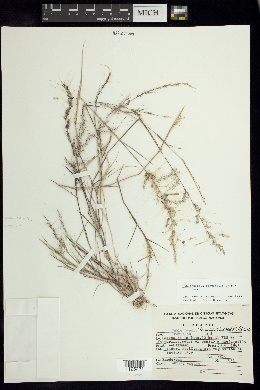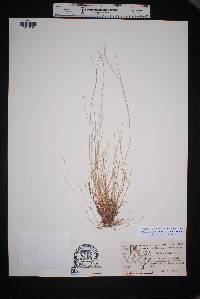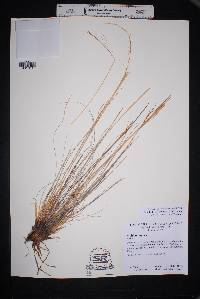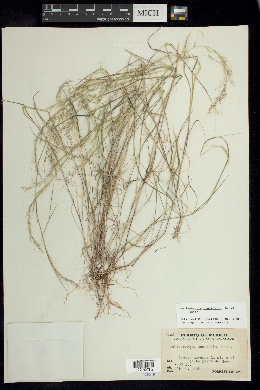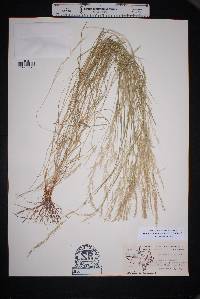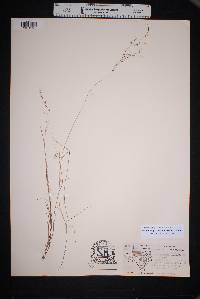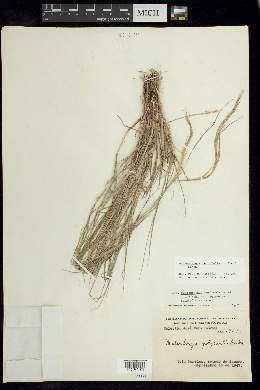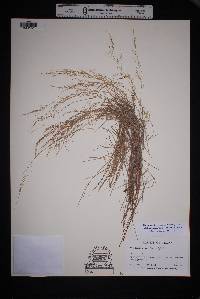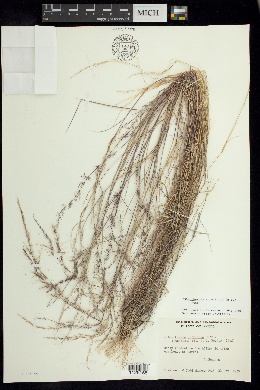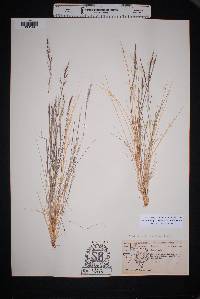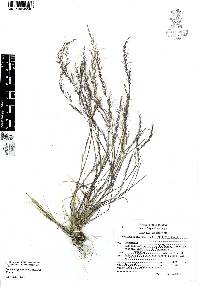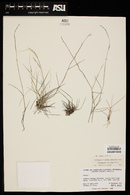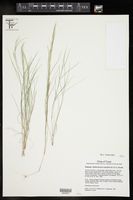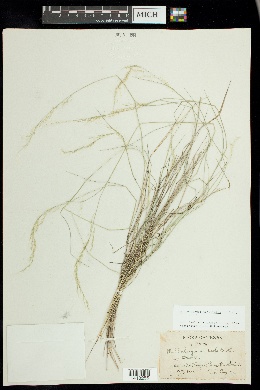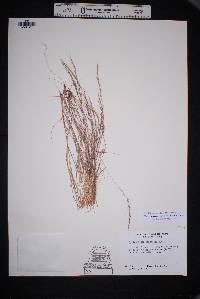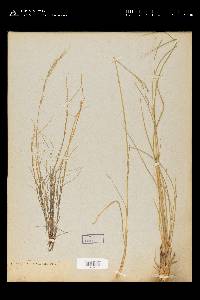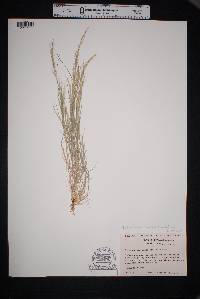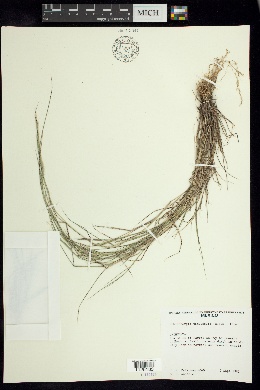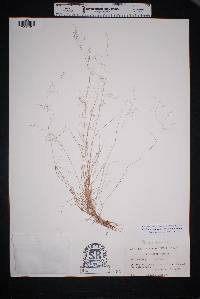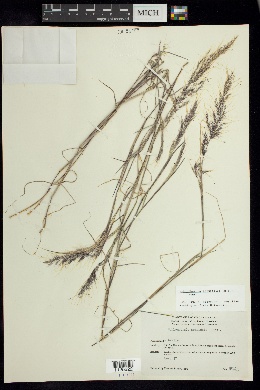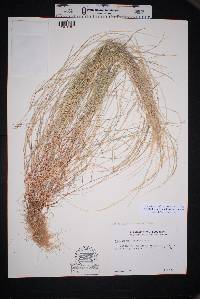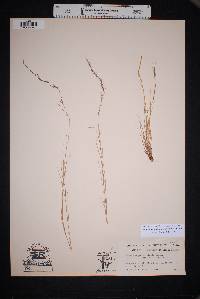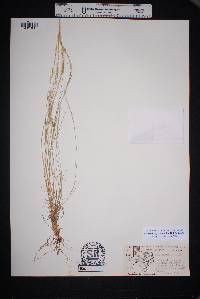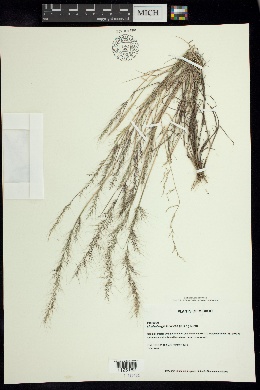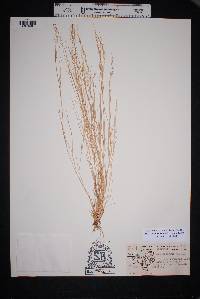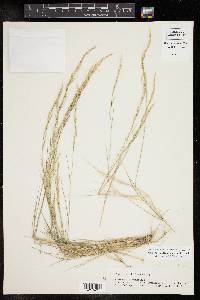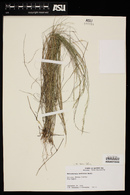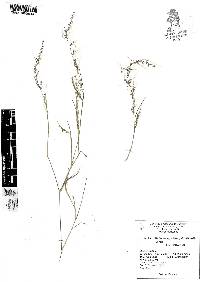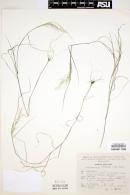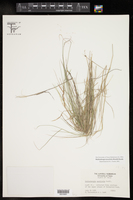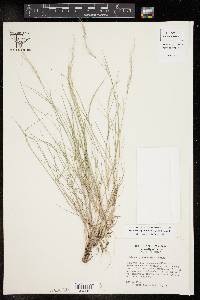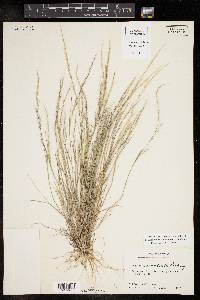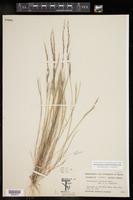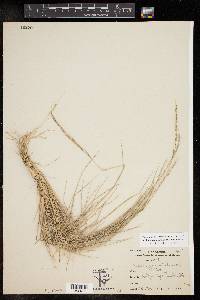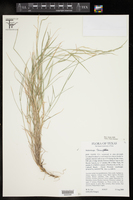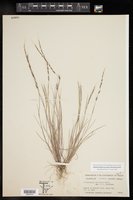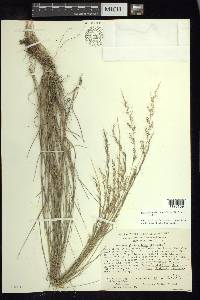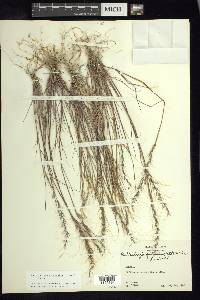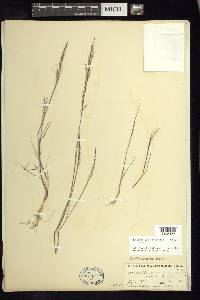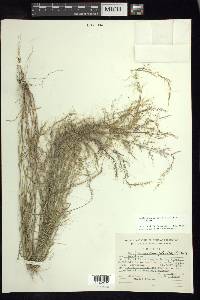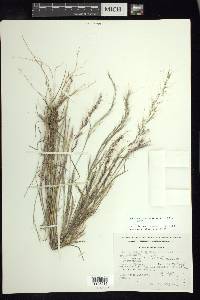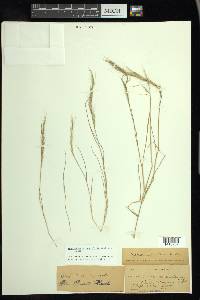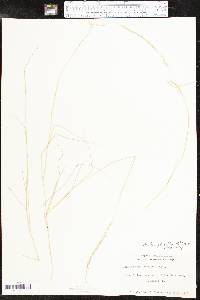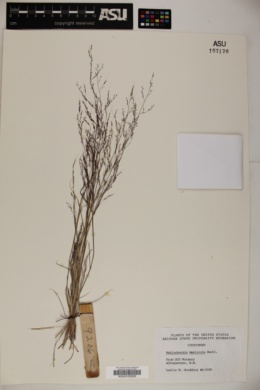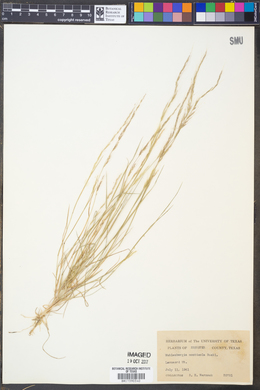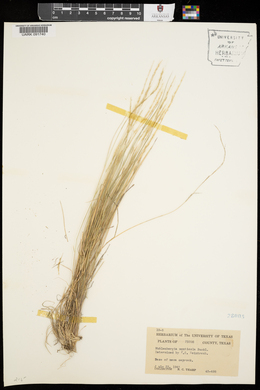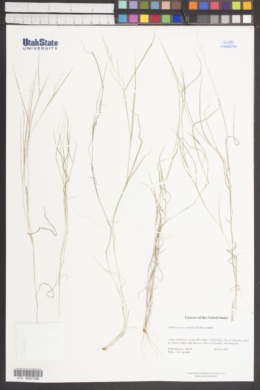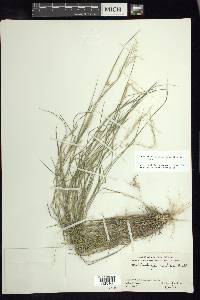Muhlenbergia tenuifolia
|
|
|
|
Family: Poaceae
mesa muhly, more...Slim-Leaf Muhly, slimflower muhly, Slender Muhly (es: liendrilla)
[Arundo quitensis Spreng., moreArundo tenuifolia (Kunth) Poir., Calamagrostis quitensis Kunth, Muhlenbergia calamagrostidea , Muhlenbergia longiseta , Muhlenbergia monticola Buckl., Muhlenbergia sylvatica var. flexuosa Vasey, Muhlenbergia trichodes Steud.] |
Plants annual or short-lived perennials; cespitose, not rhizomatous. Culms20-70 cm, erect or decumbent; internodes mostly scabridulous or smooth, always scabridulous below the nodes. Sheaths usually shorter than the internodes, glabrous, smooth or scabridulous, usually without necrotic spots, not becoming spirally coiled when old; ligules 1.2-3(5) mm, membranous throughout, acute, often lacerate; blades 2-13 cm long, 1.2-2.5 mm wide, flat or loosely involute, scabridulous or glabrous abaxially, scabrous adaxially, usually without necrotic spots. Panicles numerous, terminal and axillary, 7-20 cm long, 0.3-1.4(3) cm wide, contracted, often lax, nodding, interrupted below; primary branches 3.5-7.5 cm, ascending or diverging up to 70° from the rachises, spikelet-bearing to the base; pedicels 1-3 mm, antrorsely scabrous; disarticulation above the glumes. Spikelets 2-4 mm, often purplish, borne singly. Glumes 1.2-2.8 mm, shorter than the florets, 1-veined, veins scabrous, apices often erose, unawned or awned, awns to 0.5 mm; lower glumes 1.2-2 mm, acute to acuminate; upper glumes 1.5-2.8 mm, acute; lemmas 2-3.5(4) mm, lanceolate, mostly smooth, scabridulous distally, pubescent on the calluses, lower 1/2 of the midveins, and margins, hairs 0.5-1.5 mm, apices acuminate to acute, awned, awns 10-30 mm, scabrous, sinuous to flexuous; paleas 1.8-3.4(3.8) mm, lanceolate, sparsely villous basally, apices acuminate to acute; anthers 0.9-1.5 mm, yellowish. Caryopses 1-2.2 mm, narrowly fusiform, brownish. Cleistogamous panicles not present. 2n = 20, 40. Muhlenbergia tenuifolia grows in grama grasslands and pine-oak woodlands on rocky slopes, limestone rock outcrops, gravelly roadsides, and in sandy drainages, at elevations of 1200-2200 m. Its range extends through Mexico to northern South America. FNA 2003, Gould 1980 Common Name: slender muhly Duration: Annual Nativity: Native Lifeform: Graminoid General: Tufted annual or short lived perennial with erect or decumbent stems 20-70 cm long, branching from lower and middle nodes, striate, minutely roughened below the nodes. Vegetative: Blades 2-13 cm long, 1-2.5 mm wide, flat or loosely involute, minutely roughened or glabrous below, scabrous above; ligules 1-3 mm, membranous, deeply lacerate and often ragged; sheaths shorter than internodes, usually without necrotic spots, not becoming Inflorescence: Many narrow densely flowered panicles, both terminal and axillary, 7-20 cm long, 0.5-1.5 cm wide, often lax, nodding, interrupted below, pale greenish to purple; primary branches 3-8 cm, ascending or diverging up to 70 degrees from the rachises, bearing spikelets to the base; spikelets 2-4 mm, often purplish and borne singly, disarticulating above the glumes; glumes subequal, 1-3 mm, shorter than florets, veins scabrous, apices often erose, unawned or awned, the awns to 0.5 mm; lemmas 2-3.5 mm, lanceolate, pubescent on lower half of midveins and margins, the hairs 0.5-1.5 mm, apices acute to acuminate, with sinuous awns 1-3 cm, long. Ecology: Found on dry rocky slopes and ledges, often limestone rock outcrops and in sandy drainages, from 4,000-8,000 ft (1219-2438 m); flowers July-November. Distribution: AZ, NM, sw TX; south to s MEX. Notes: Distinguished by being a cespitose annual or short lived perennial with semi-weak stems that are erect to decumbent, and loosely contracted panicles bearing single-flowered spikelets with long sinuous awns up to 3 cm long. Similar to M. pauciflora and M. polycaulis; however, those two species are perennials while this one is generally an annual. Also, check the lemmas, which in this species are pubescent on the lower half and on M. pauciflora are almost completely glabrous. Ethnobotany: Unknown Etymology: Muhlenbergia is named for Gotthilf Heinrich Ernst Muhlenberg (1753-1815) a clergyman and botanist from Pennsylvania; tenuifolia means having finely divided slender leaves. Synonyms: Muhlenbergia monticola Editor: SBuckley 2010, FSCoburn 2014, AHazelton 2015 |
|
|
|

